I've made over 200 gulab jamuns, experimenting with different ingredients and techniques. This post is a summary of the common mistakes people make and is packed with tips and tricks for beginners to make the best gulab jamuns.
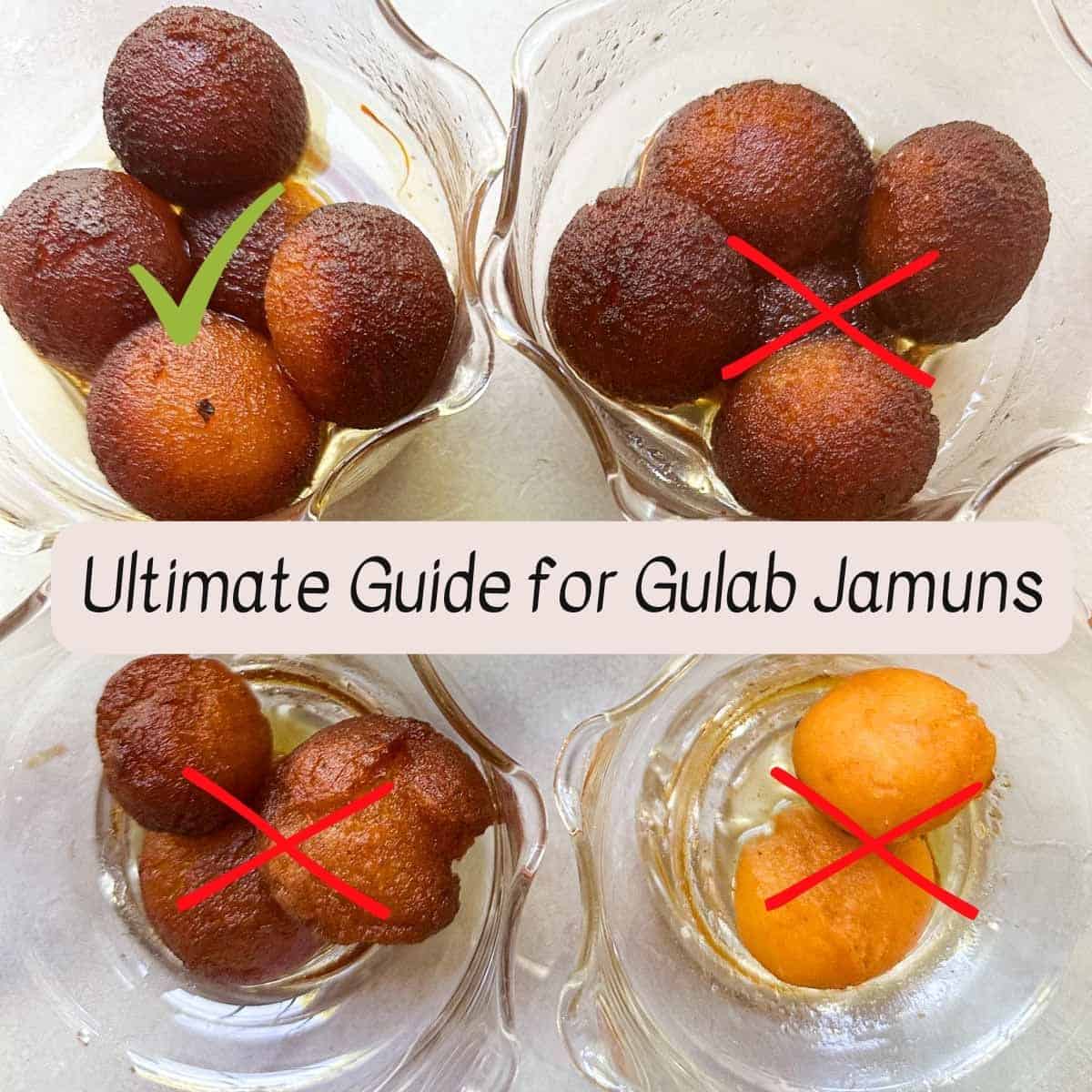
Gulab jamuns are synonymous with holidays and festivities. This blog post is for beginners dabbling in making gulab jamuns for the first time or for folks looking to improve their gulab jamun game! It gives a sneak peak into the recipe development process that led to my original gulab jamun with milk powder, stuffed gulab jamun, and dry gulab jamun recipes. Included are insights on how different ingredients and technqiues affect gulab jamuns, solutions for common mistakes, and delicious recipes for gulab jamuns. Feel free to skip around the sections based on what you are looking for!
Jump to:
- What is the ideal gulab jamun?
- 10 tips for soft and round gulab jamuns
- Testing milk powder vs. khoya vs. paneer for best gulab jamun
- Baking powder vs. baking soda for jamuns
- All purpose flour (maida), cornstarch, and semolina's effects on gulab jamuns
- Frying gulab jamuns in oil vs. ghee
- Ideal temperature for frying gulab jamuns
- Ideal gulab jamun syrup
- Ideal gulab jamun syrup temperature
- Common mistakes and solutions
- Gulab Jamun Recipes
What is the ideal gulab jamun?
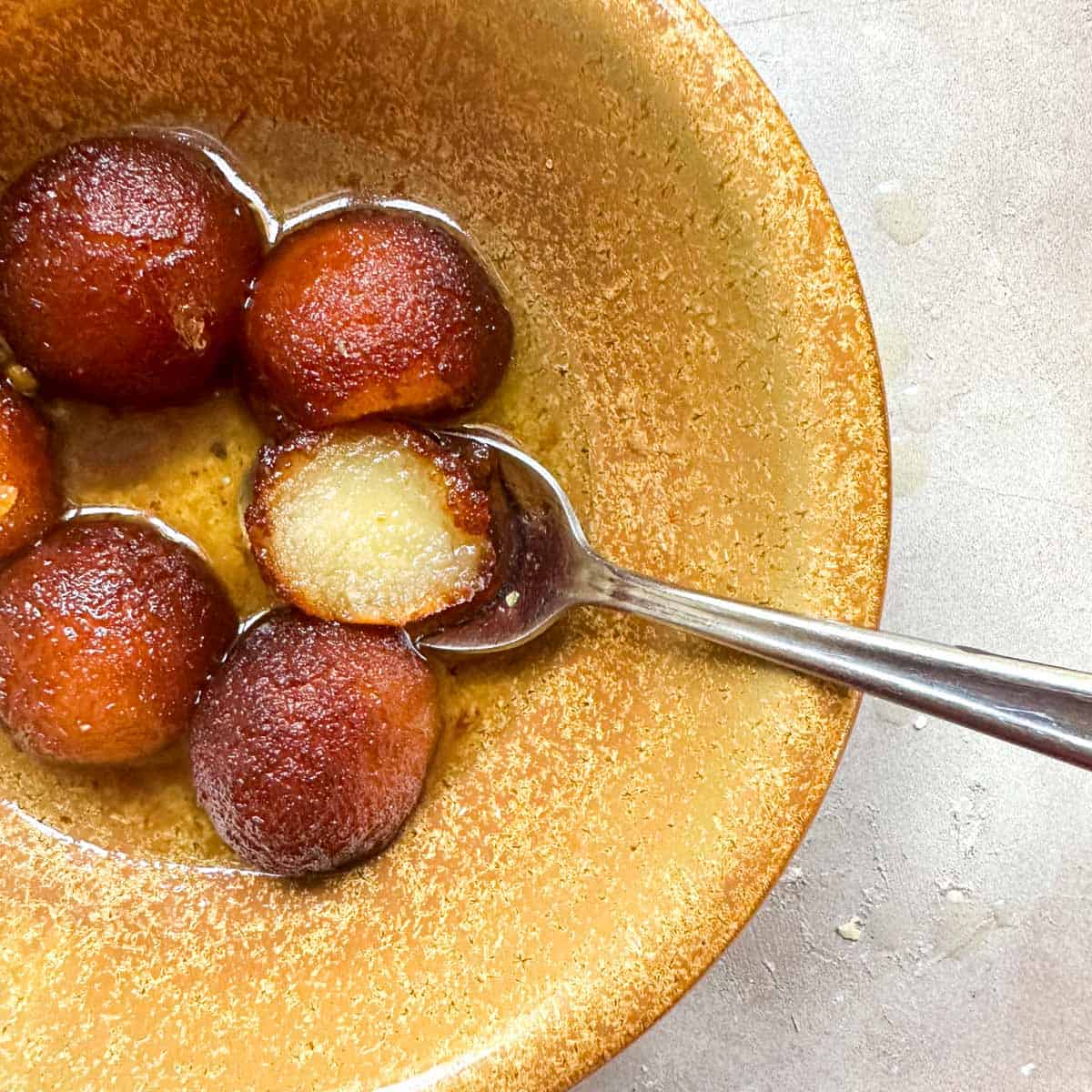
Everyone has their ideal gulab jamun but here are my criteria for delicious gulab jamuns:
- Soft - A melt-in-your-mouth gulab jamun is the best kind. No hard gulab jamuns here.
- Round - I want the gulab jamuns to be strong enough to hold their iconic round shape.
- Well-Balanced Flavor - I want a well balanced syrup with any combination of cardamom, saffron, and rose water. My biggest pet peeve when it comes to syrups is that they are overly sweet. My ideal gulab jamun is one where I can taste the milky fried dough as well as the syrup. It is a gulab jamun where I am begging to get seconds!
10 tips for soft and round gulab jamuns
1. Use whole milk powder not low fat
Whole milk powder is key to making really rich and delicious gulab jamuns. Often times, stores will sell the low-fat kind but make sure to go out of your way for the whole milk variety because it does make a difference in the tenderness and taste of the final jamuns. I've also noticed variances in milk powder sold at Indian grocery stores which can be larger granules compared to the small granules sold at American grocery stores so always rely on gram measurements rather than the cup/volume measurements. If you are in a pinch and only have low-fat milk powder, use ~ tablespoon of melted ghee and add it into the mixture to create a more tender jamun.
 Buy Now →
Buy Now → 2. Equal proportions of flour to milk powder leads to a soft yet structurally sound and round jamun .
The rule of thumb is that less flour yeilds softer gulab jamuns. However, with too little flour, the gulab jamuns tend to disintegrate either in the frying or soaking process. Conversely too much flour leads to hard jamuns. Follow my recipe for gulab jamun with milk powder which has exact gram measurements and you'll achieve the right balance of softness and structure.
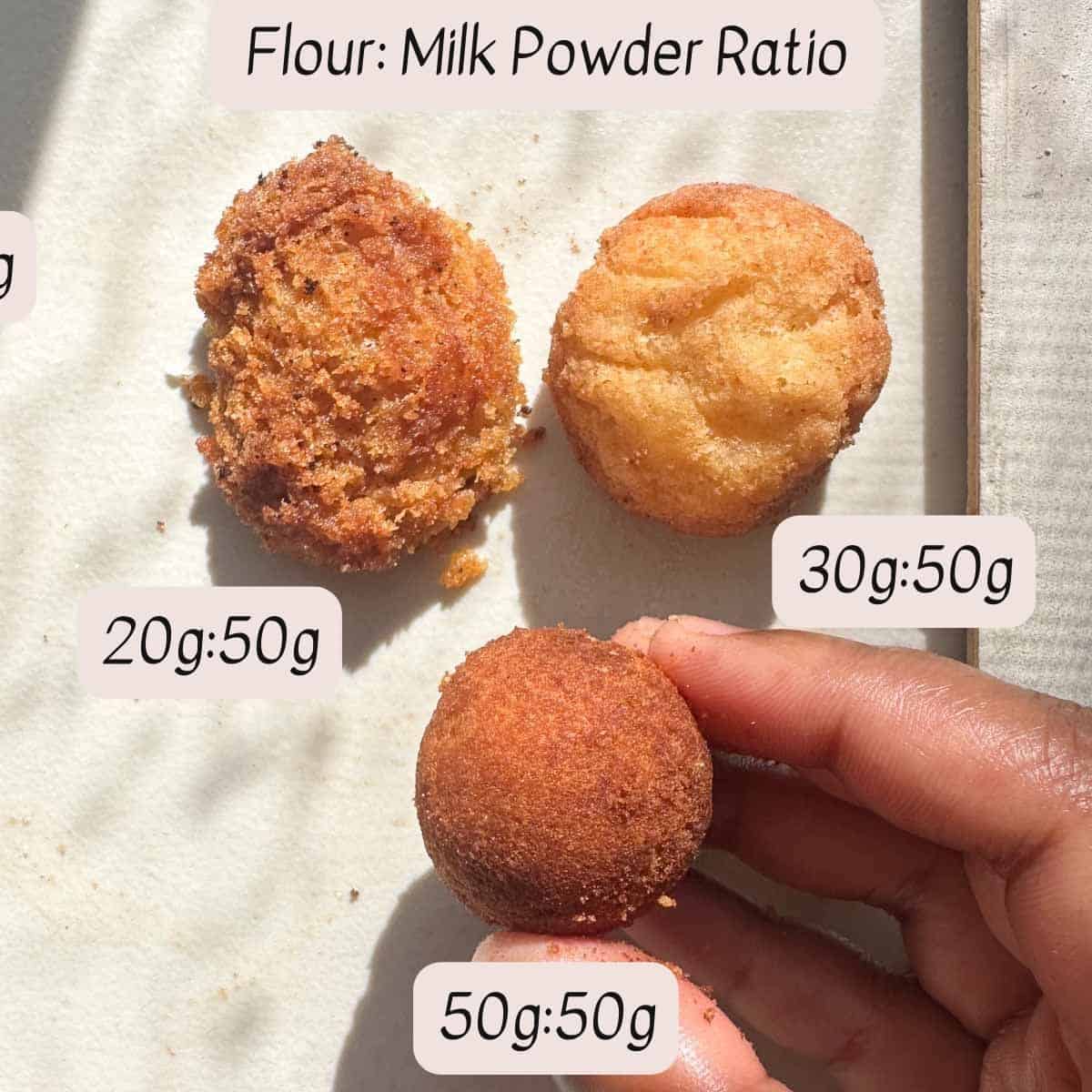
3.Use gram measurements not volume for consistent jamuns.
It helps to weigh flour precisely in grams rather than by volume which can yield different results depending on how tightly you pack the ingredients in the cup. In addition, Indian brands of milk powder tend to be much coarser than American brands of milk powder which means that Indian milk powder takes a lot more space in volume than American. So please use gram measurements that are listed in my gulab jamun recipe for the most accurate and consistent results.
4. Ensure that the dough is soft like play dough.
Even with precise gram measurements in the recipe, different brands of milk powder and flour tend to absorb different amounts of liquid. To ensure that the gulab jamun is tender and fluffy use your senses to feel the dough. Allow it to rest for 5 minutes to give it time to absorb the liquid. The dough should be soft and pliable and feel like play dough. It shouldn't be tacky or sticky. If the dough is too dry it will result in a dense gulab jamun so add a teaspoon of heavy cream to the dough at a time until it is soft enough.
5. Add baking powder for fluffiness.
Adding baking powder helps the interior of the gulab jamuns fluff up. Baking soda, on the other hand, is too powerful and can make the gulab jamuns burst.
6. Use pressure and ghee create smooth balls.
Greasing your hands with ghee helps create a smooth exterior on the gulab jamun balls. In addition, many recipes mention not to use too much pressure when rolling the gulab jamun balls. However in testing, I have found that it is crucial to add a bit of pressure with your palms to help form a smooth ball.
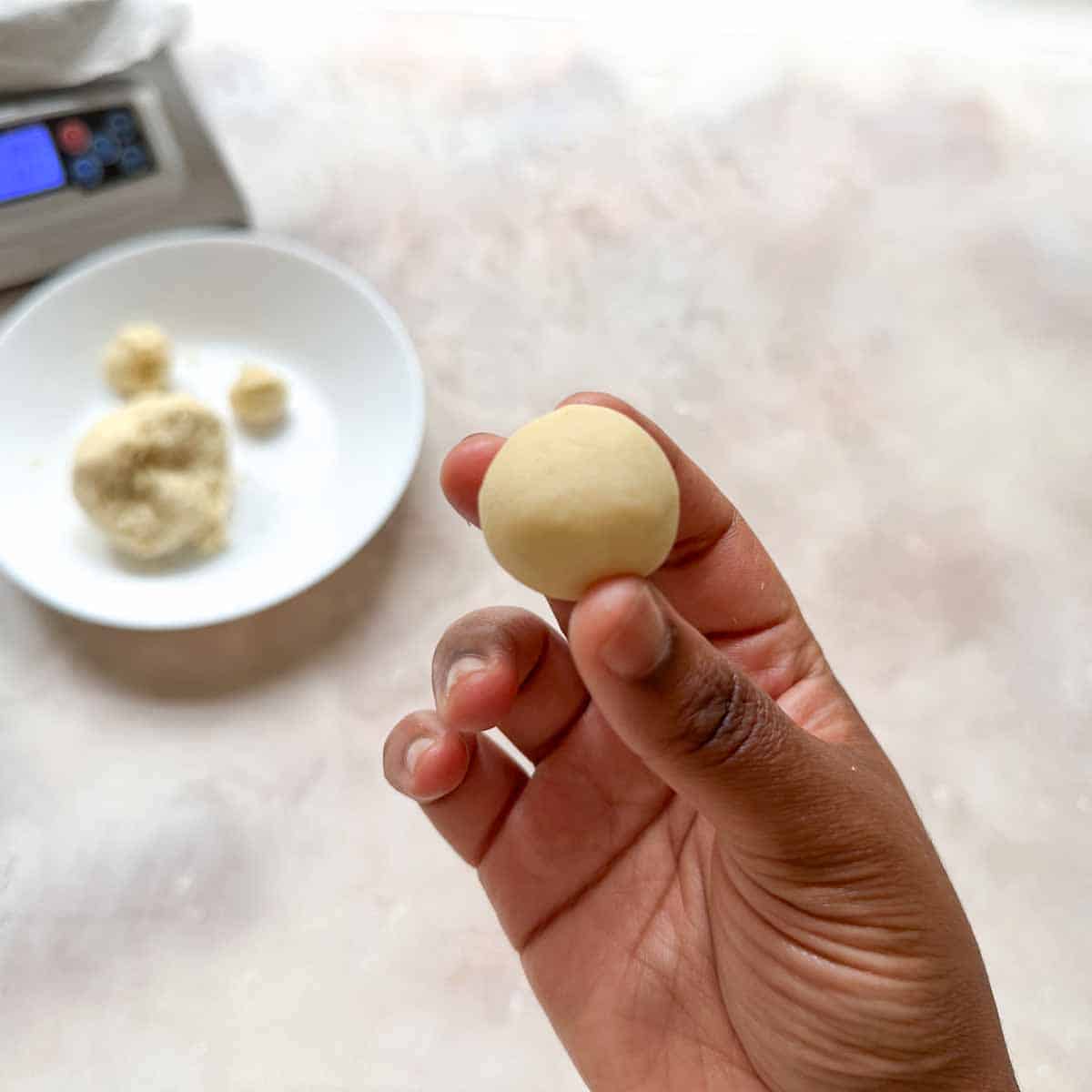
7. Fry gulab jamuns at 325 Farenheit for 3-4 minutes.
Frying low and slow is key. Gulab jamuns have milk solids in them which can burn easily. You need to fry low so that the entire jamun can cook through before the outside browns. Try to keep the temperature range when frying between 325 and 350 Fahrenheit. It should take approximately 3-4 minutes for the gulab jamun to get a deep brown. If it gets browner faster than this, it is an indicator that the oil is too hot. Frying too quickly will yield a gulab jamun that is hard and gummy at the same time.
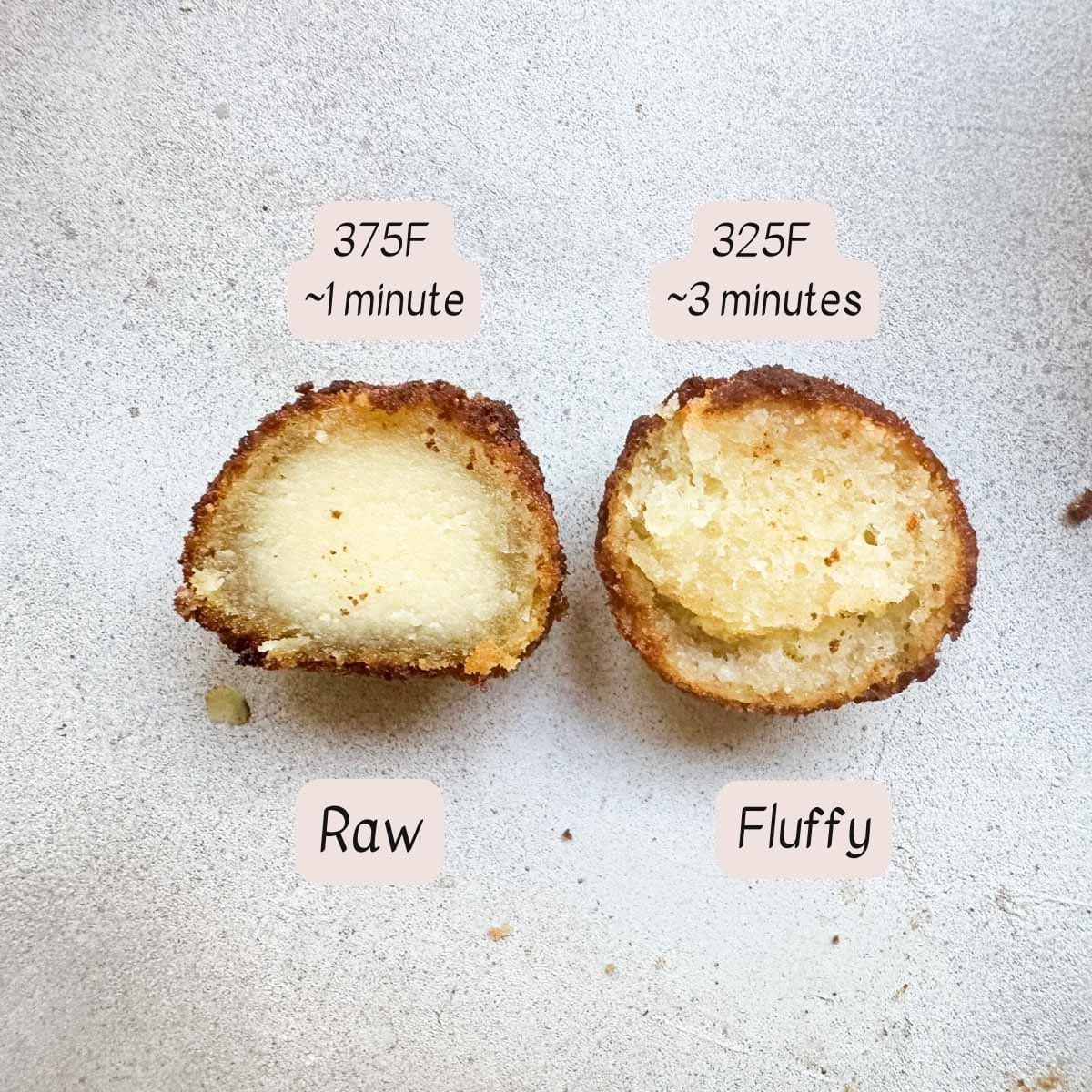
8. Move slotted spoon underneath the gulab jamuns to rotate them in the oil.
When the gulab jamuns are first placed in the oil they are very delicate. Touching them with the spoon can dent the balls. To prevent this, create small motions the oil to indirectly move them while also ensuring even browning.
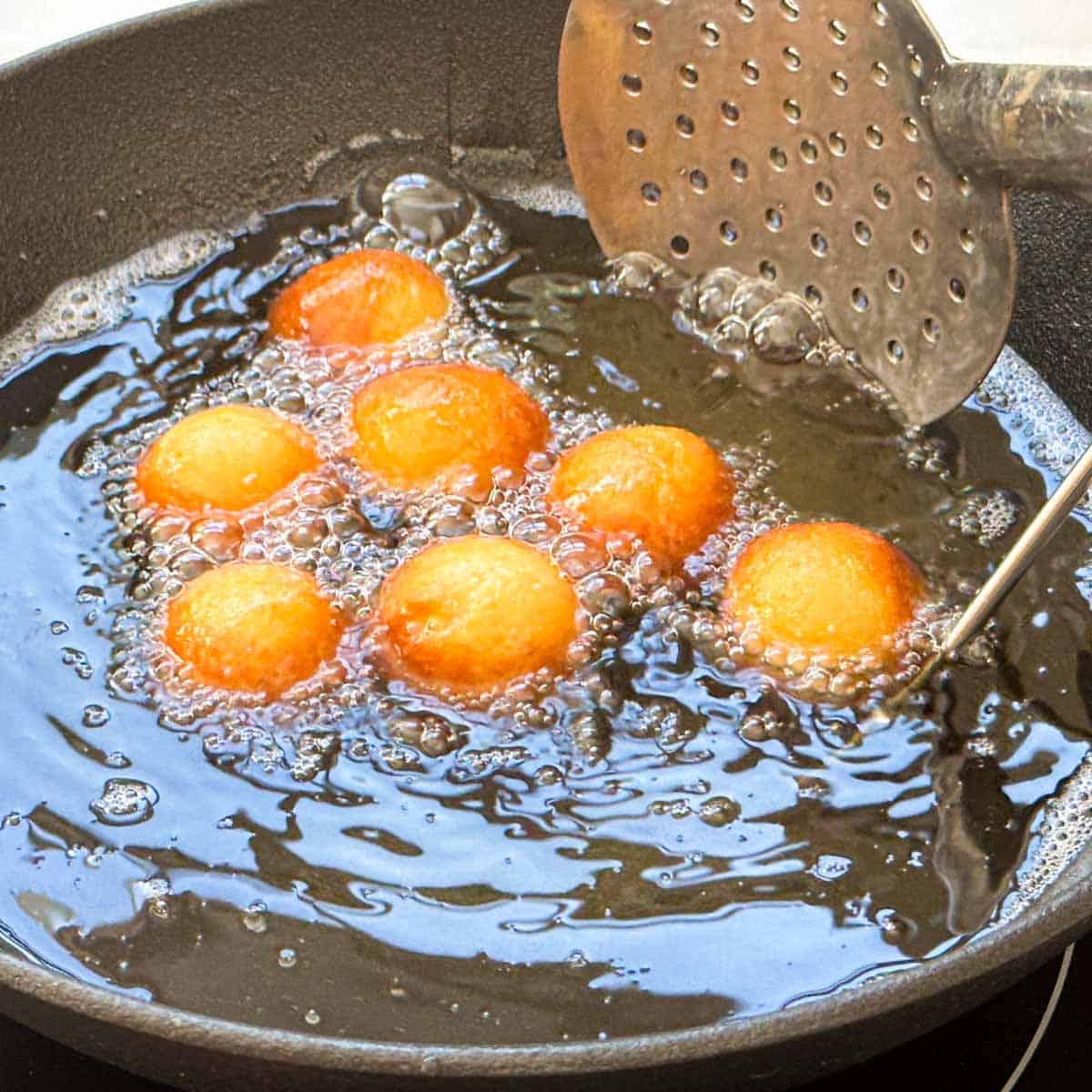
9. Soak the jamun in warm semi-sweet syrup right after frying.
Soaking the jamun while it's still warm will ensure that it is soft and spongy. Warm syrup ensures that the jamuns are able to absorb the syrup but if the syrup is boiling hot the jamuns can enlarge too quickly and break. I also recommend a thinner syrup that uses 4:5 ratio of sugar to water so the jamuns can easily soak the syrup.
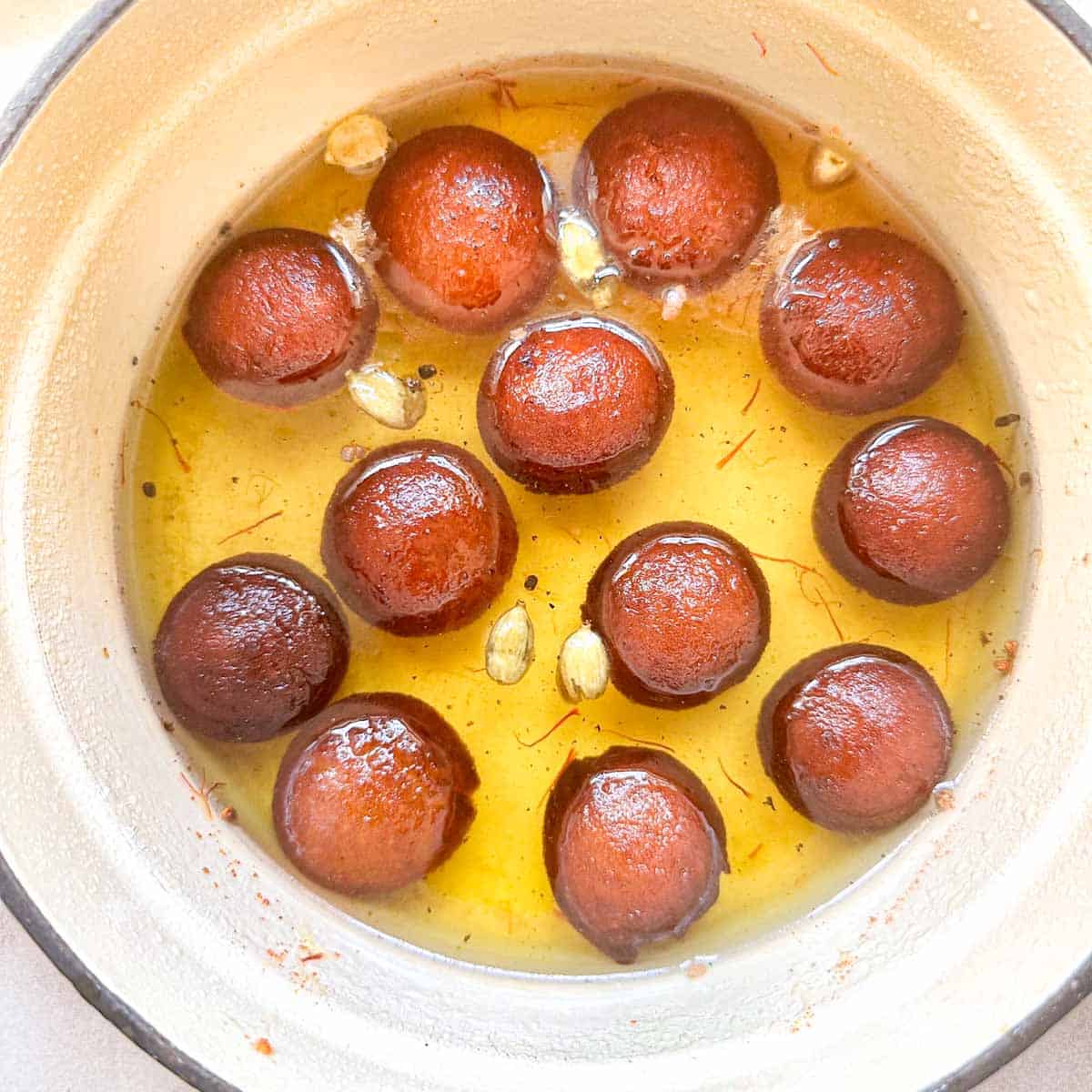
10. Serve gulab jamuns at room temperature or slightly warmed for the softest texture.
When heating gulab jamuns in the microwave, heat in small, 10 second intervals. Heating gulab jamuns too long can cause the jamuns to break apart.
Testing milk powder vs. khoya vs. paneer for best gulab jamun
There are so many recipes out there that use various ingredients for the dough. The three main ingredients that I've seen used to create that milky flavor in the dough are milk powder, khoya, and paneer. So I tested each of these three ingredients.
Methodology
In my tests, I initially tried to keep all the ingredients constant besides the paneer, khoya, and milk powder. However, I realized that each of these milk products requires a different amount of liquid (heavy cream is what I used). The milk powder needs the most liquid and the khoya/paneer need a lot less. Aside from this change, all of the recipes use the same ingredients (flour, milk product, baking powder, salt, and heavy cream) that were measured to the exact gram.
Results: Milk powder is the best for beginners
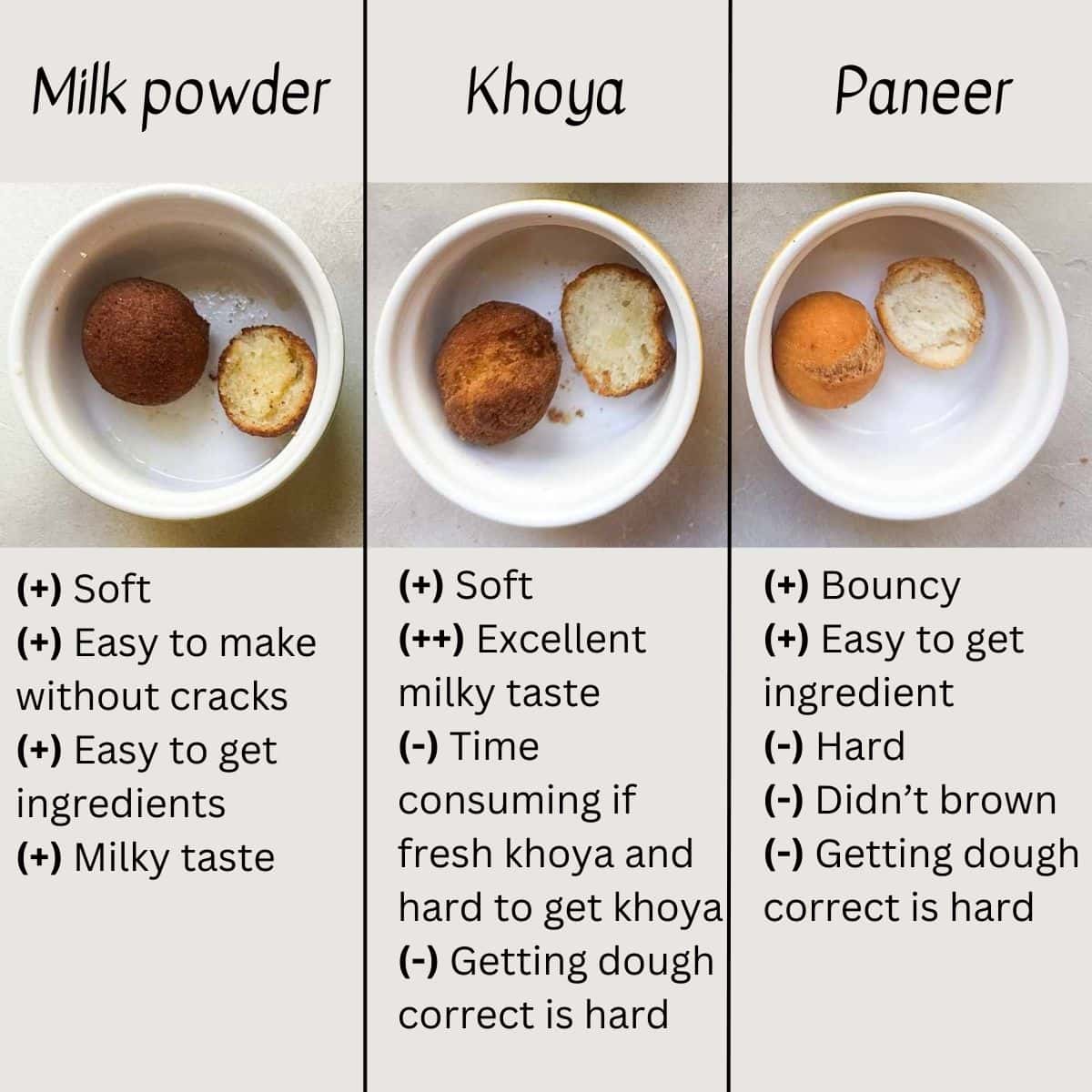
- Milk powder yielded the most consistently round gulab jamuns that held their shape. The khoya was the product that tended to break the most during the frying process even though all of doughs were of the same firmness initially. The paneer had surface cracks but didn't break as often as the khoya.
- Milk powder and khoya had soft interiors while paneer led to a hard ball. The paneer balls were quite tough and hard like golf balls.
- Khoya yielded the tastiest dough. The khoya has the milkiest and richest taste, milk powder placing in second, and the paneer not having much of a taste at all.
- Paneer gave the jamuns a bounce. Even though the texture of the paneer was too tough on the exterior, they still had a bit of bounce that some folks love in gulab jamuns.
- Paneer jamuns were pale. Even after prolonged cooking the paneer gulab jamuns were pale. My hypothesis is that because paneer has a higher acidity than the other milk products it probably needs a different leavener like baking soda instead of baking powder to help it brown.
- Different brands of khoya and paneer had varying level of hyrdration making it hard to hone in on an exact amount of liquid.
Summary: Milk powder is the best for beginners
For beginners, milk powder is the best choice for making gulab jamuns.
- Milk powder delivers the taste of milk without the prep time of condensing khoya.
- Milk powder helps standardize the recipe. Even if you aren't condensing khoya or making paneer from scratch and buying it from the store, each brand has a different quality with differing hydration. This makes it very hard to standardize a recipe without explicitly calling for a specific brand. The milk powder on the other hand was very consistent since it is a dried product.
- Milk powder tends to be more accessible than khoya in the United States.
- Not all milk powders are the same. Use whole milk and not low fat milk powder to yield a tender and flavorful gulab jamun.
Future ideas for experimenting with khoya and paneer
I need to do more experimenting to come up with a recipe for gulab jamun with khoya.
Although I wasn't able to successfully create a consistently round and soft gulab jamun using khoya and paneer during these trials, I did learn a lot for the next time I experiment. Here are my takeaways for next time or if you decide to test before me:
- Test whether eliminating baking powder from the khoya helps it keep its shape.
- Test with homemade khoya vs. store-bought to see if this makes a difference.
- Add baking soda to the paneer gulab jamun to see if it helps it brown.
- Test combo of paneer and khoya to give gulab jamuns structure from the paneer and flavor from the khoya.
Baking powder vs. baking soda for jamuns
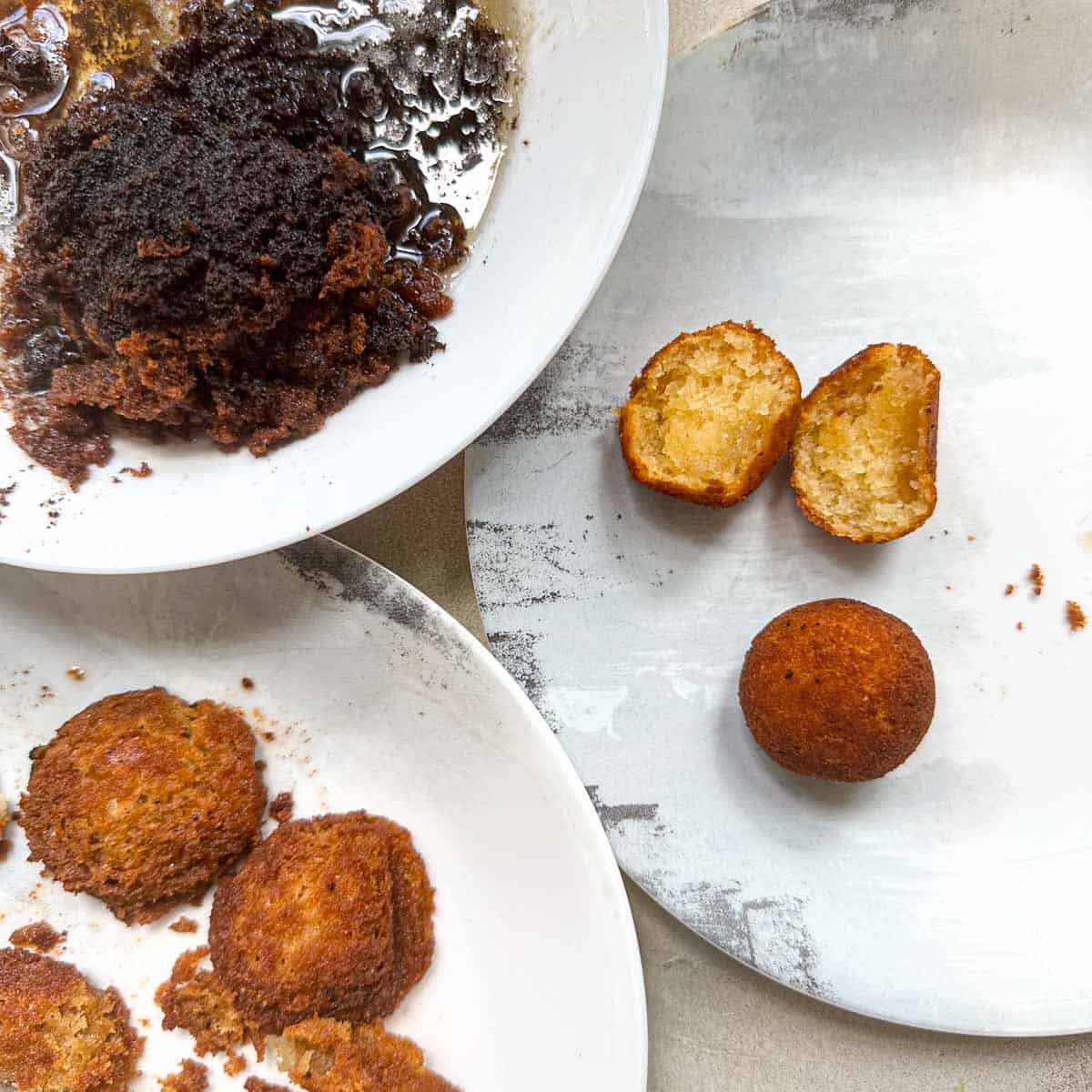
Once I settled on using milk powder, I tried using baking soda and powder, baking powder, and only baking soda. Here are my findings:
- Excess baking soda in gulab jamun dough can cause them to break when frying. Both an excess of baking soda and powder can cause gulab jamuns to fall apart in the oil; however, baking soda is much more powerful, so even a ⅛ teaspoon change can drastically cause issues in the final gulab jamun.
- Baking soda makes the gulab jamuns brown too quickly. Baking soda is a base whereas baking powder is both an acid and a base combined. The pH of baking soda causes the gulab jamuns to brown too quickly on the exterior before the inside is done cooking.
- Baking powder scales up and down in recipes well and helps create a fluffy interior for gulab jamuns.
All purpose flour (maida), cornstarch, and semolina's effects on gulab jamuns
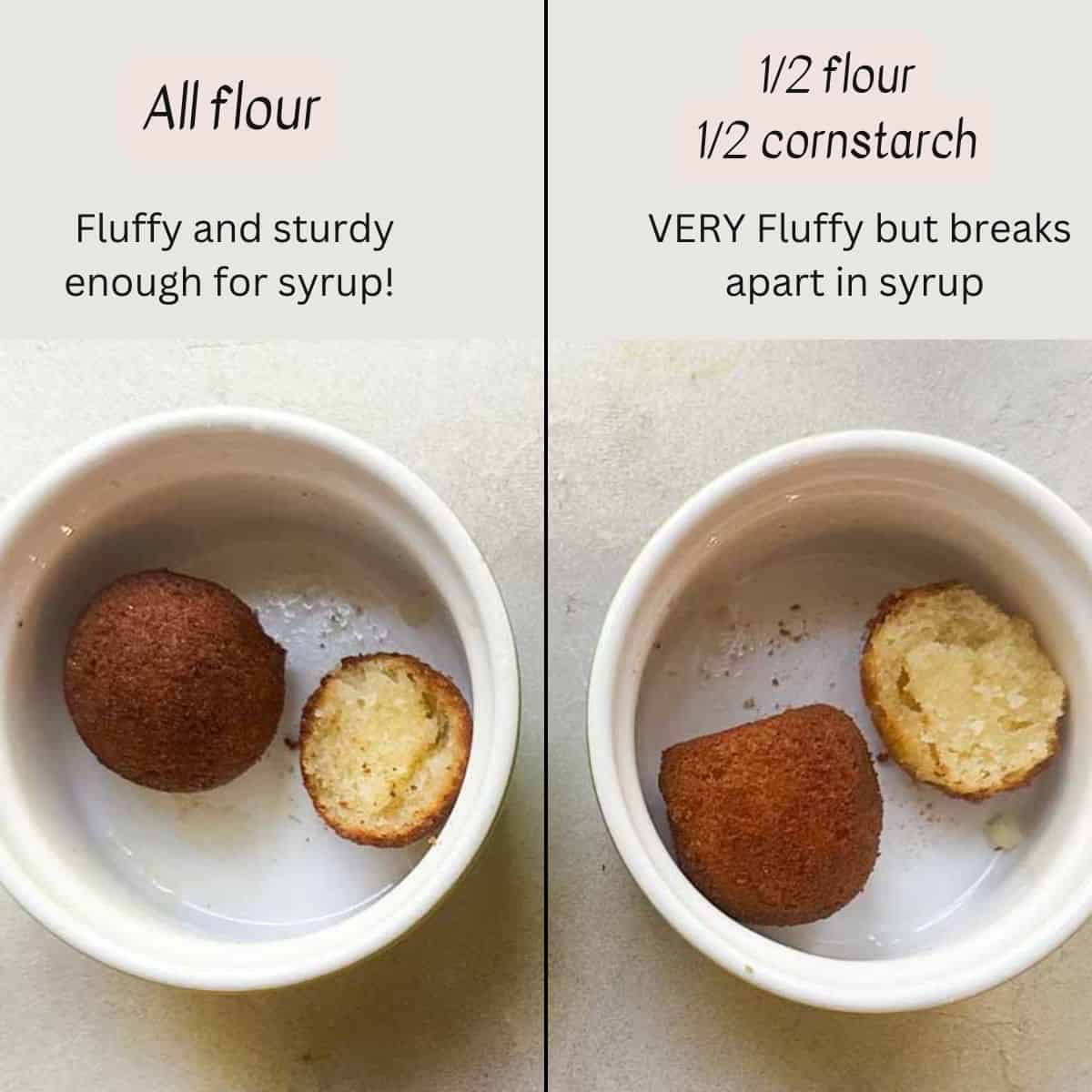
- Flour (maida) is essential for structure of gulab jamuns. When adding too little flour my gulab jamuns either disintegrated in the oil or broke apart when added to the syrup. The gluten in all-purpose flour is crucial for the stability of gulab jamuns.
- Too much flour can create a hard gulab jamun. Conversely, adding too much flour can weigh down a gulab jamun and make it too hard to take on any of the syrup.
- The rough ratio of flour to milk powder is roughly 1:1 in weight (grams), NOT volume i.e. 50g milk powder to 50g flour. Decrease the amount of flour by 5-10 grams if you want a softer consistency and the opposite if you want a harder consistency.
- Cornstarch creates a very soft gulab jamun - Much like how adding cornstarch to cookies yields a soft cookie, adding it to gulab jamun dough also yields a softer jamun. However, in trials where I substituted cornstarch in place of flour, the gulab jamuns became too soft and broke apart in the syrup after soaking.
- All-purpose flour is better for gulab jamun that semolina. In one trial, I mixed half the amount of fine semolina with half all-purpose flour. I hoped that semolina's high gluten content would give the gulab jamun more structure and bounce. However, the semolina couldn't absorb the heavy cream as needed, leaving speckled dots on the exterior. If attempting this, consider a different hydrating liquid and a longer resting time. Ultimately, I found all-purpose flour more suitable for my future gulab jamun recipes.
Frying gulab jamuns in oil vs. ghee
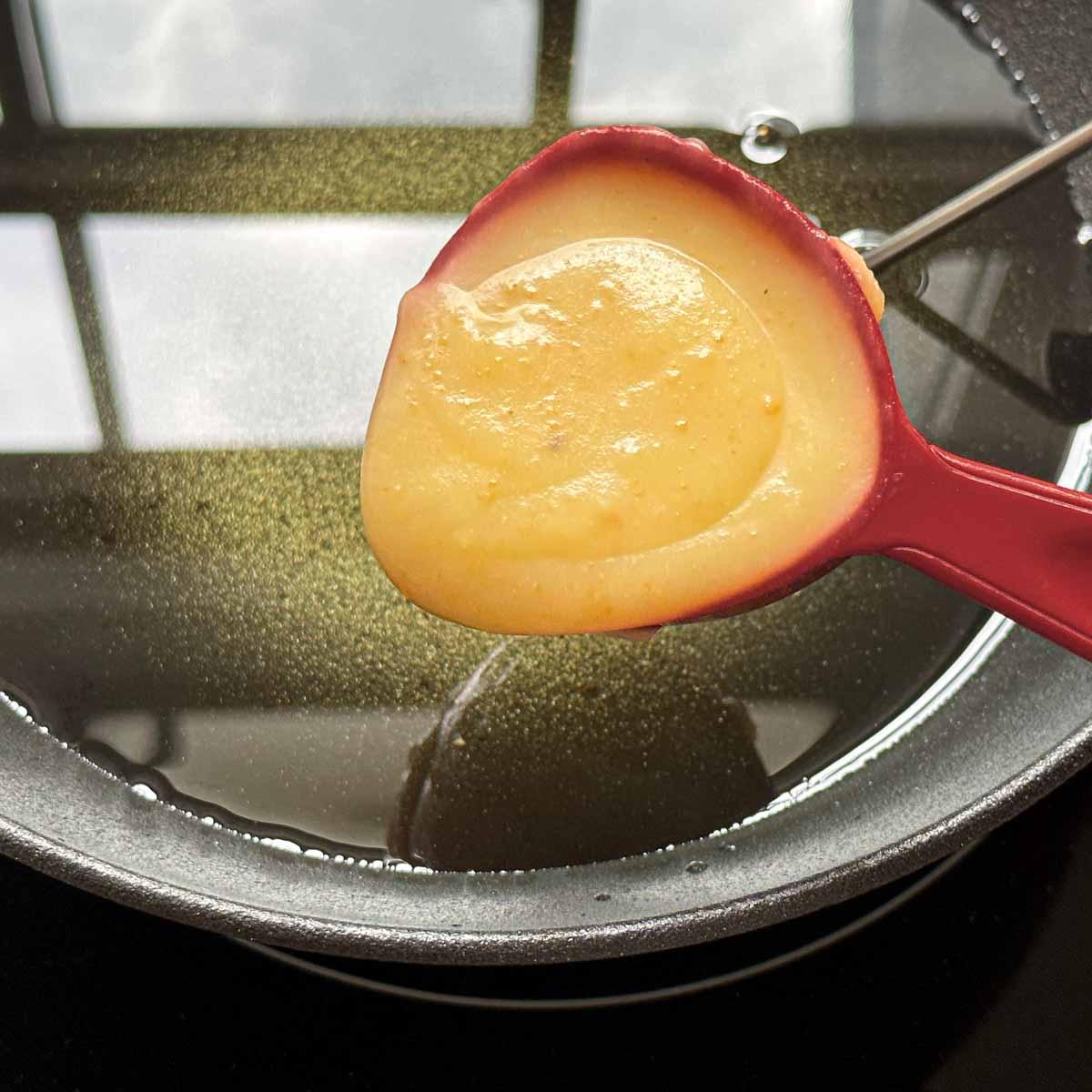
The simple answer is that you can fry in either oil or ghee. Frying in ghee adds a rich flavor to the final gulab jamun but is a pricey option whereas frying in oil is cheaper but doesn't add much flavor to the jamun. My recipe takes the middle ground of frying in mostly oil and adding a few tablespoons of ghee to the oil to impart the flavor. Whatever you do, don't fry using butter because the milk solids in butter will burn.
Ideal temperature for frying gulab jamuns

Fry gulab jamuns at a low temperature of 325 Fahrenheit. The heat of the oil should always stay in the range of 325 to 350 Fahrenheit. Frying at a higher heat will result in gulab jamuns that brown faster on the outside and remain raw on the inside.
Ideal gulab jamun syrup
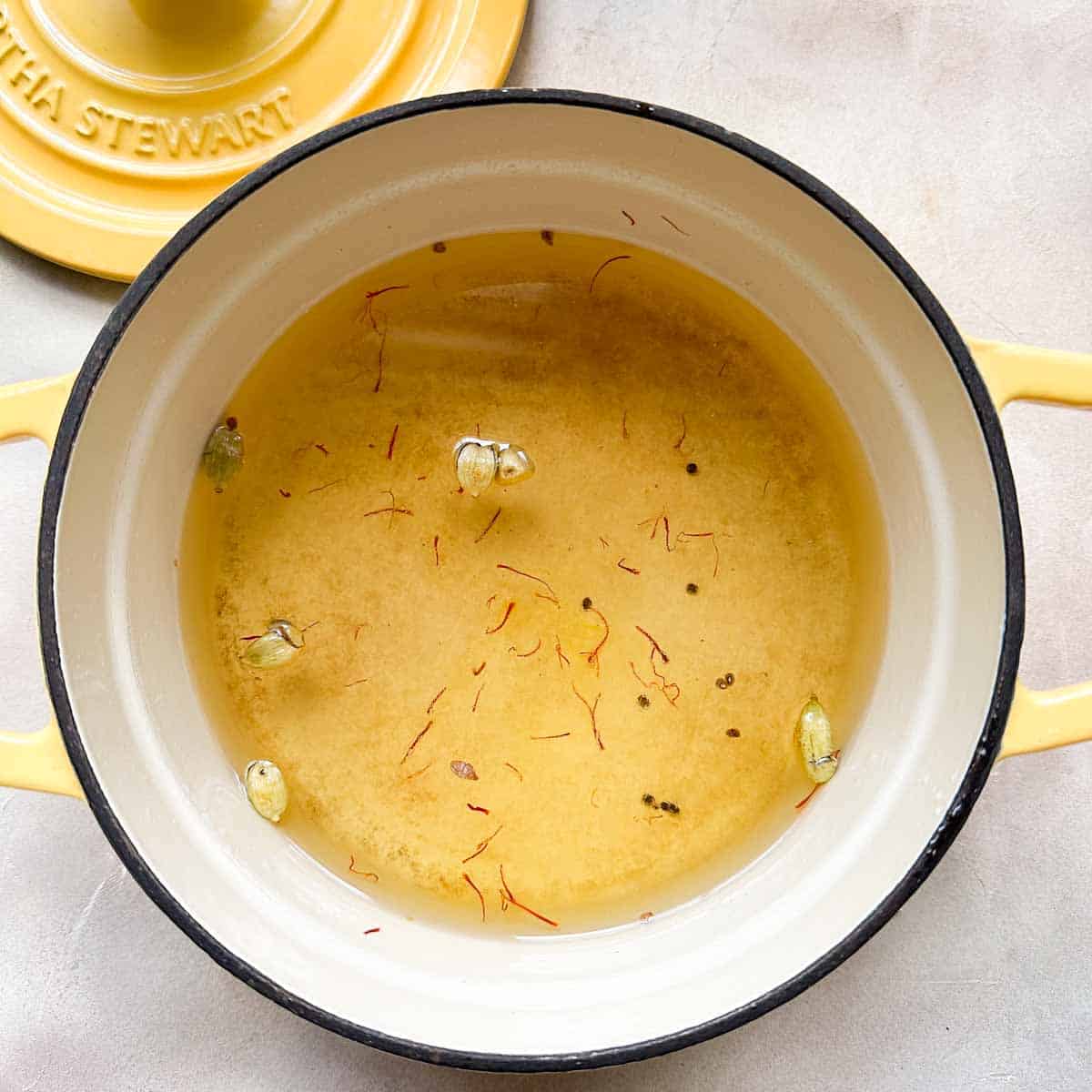
My biggest issue with gulab jamuns is that they can be too sweet. Typically folks use a 1:1 ratio of sugar to water; however, as the syrup thickens it gets even sweeter. My recipe uses a 4:5 ratio of sugar to water. This means that for every 1 cup of sugar there are 1.25 cups of water, which yields a less sweet syrup.
In addition, some recipes recommend that you reduce the syrup until it becomes thread consistency; however, I recommend against that because the thinner the syrup, the easier it is for the gulab jamuns to soak in the syrup. As the gulab jamun and the syrup sit and soak together, the syrup naturally gets thicker from the flour that is contained in the gulab jamuns. If the syrup is still not thick enough to your liking, you can always spoon out some and reduce it on the stove.
If you are looking for a standalone recipe for gulab jamun syrup along with ideas on how to use the syrup beyond gulab jamuns, check out this blog post.
Ideal gulab jamun syrup temperature
It is important to add gulab jamuns to syrup that ranges between 100 and 130 Fahrenheit. If the syrup is cold, then the jamuns will struggle to soak in the syrup. If the syrup is boiling hot, then the jamuns will swell up too quickly and break apart in the syrup.
Common mistakes and solutions
Why is my gulab jamun hard?
Reason 1: You fried the gulab jamun at a very high heat. This caused the outside to brown while the inside turned gummy. As the jamun cools, the uncooked dough is not able to soak as much syrup leading to a hard jamun. Solution: Fry within the 325F - 350F range.
Reason 2: You added too much flour. Flour is essential to giving the gulab jamun structure but too much of it will cause the jamun to be hard. Solution: Use the gram measurements listed in my recipe for accurate flour/milk powder ratio.
Reason 3: You used low fat milk powder instead of whole milk powder. Low fat milk powder doesn't have enough fat to create a tender crumb and also tends to absorb more liquid. Solution: To compensate, you can add 1 tablespoon of melted ghee to the dough to add more fat. If the dough still feels dry, add 1 teaspoon of heavy cream until it feels soft but not sticky like play dough. Reference my recipe for accurate measurements.
Reason 4: The jamun didn't soak in the syrup. Solution: Remember to add the jamun into the syrup right out of the fryer and to have the syrup at a warm temperature (100F).
Why did my gulab jamun break in the oil?
Reason 1: You added baking soda instead of baking powder. Baking soda is much more potent than baking powder. When I used even a bit of baking soda, the gulab jamuns expanded and dissolved in the oil. Solution: Remake the dough with baking powder instead.
Reason 2: You didn't add enough flour. Flour gives gulab jamun the structure it needs to hold its shape. In trials where I used little flour, the gulab jamuns would break, crack, or disperse in the oil. Solution: Use the gram measurements listed in the recipe for accurate flour/milk powder ratio. Alternatively, add a bit of flour at a time and drop pieces in oil to see if the gulab jamun is at the right consistency.
Reason 3: You didn't roll the dough ball with a smooth surface. This won't result in a gulab jamun that completely breaks but it will have cracks on the surface. Solution: Grease and use a bit of pressure with the palm of your hands to help smooth the exterior of the balls.
Why did my gulab jamun break in syrup?
Reason 1: The syrup was too hot. If the syrup is still simmering or hot when the jamuns are added, they will expand too quickly and break apart. Solution: Keep the syrup around 100F before adding the gulab jamun.
Reason 2: Gulab jamun are not brown enough. If you don't constantly rotate the gulab jamuns in the oil, there will be spots that are blonde in color rather than a deep brown. These spots then become the week spots that soften and break in the syrup.
Reason 3: Not enough flour. Flour gives gulab jamun the structure it needs to hold its shape. In trials where I used little flour, the gulab jamuns would break, crack, or disperse in the oil. Solution: Use the gram measurements listed in the recipe for accurate flour/milk powder ratio. Alternatively, add 1 teaspoon of flour at a time to the dough until it is at the right consistency.
Gulab Jamun Recipes
Here are some well tested gulab jamun recipes that use milk powder. The gulab jamun recipe is the classic recipe. The stuffed gulab jamun is for those who want an extra crunchy surprise in the center. The dry gulab jamun is great dessert to add to your holiday dessert boxes!

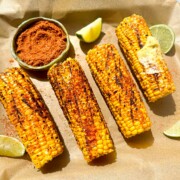
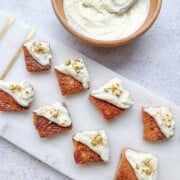

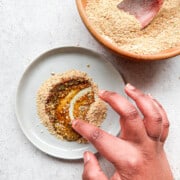
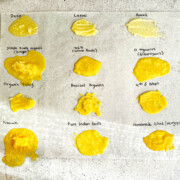
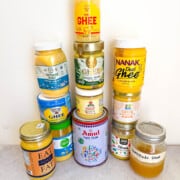
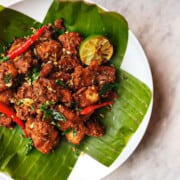
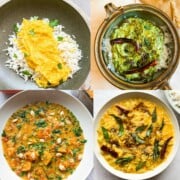
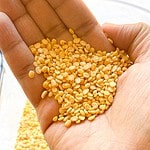
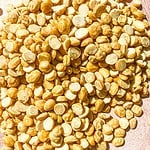
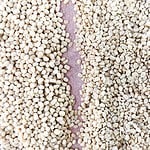
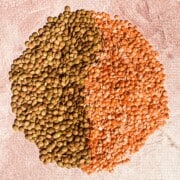

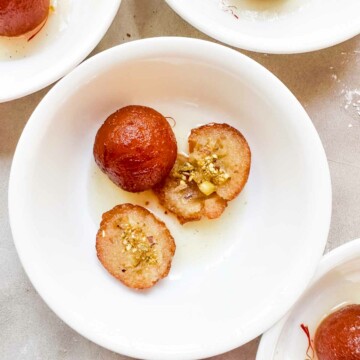
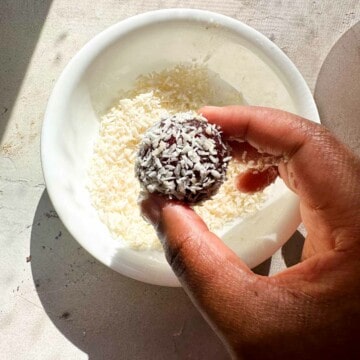
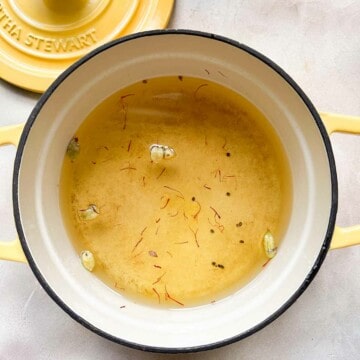
Aditi Chang says
Thank you so much for all these details. I want to make them this weekend but the only organic milk powder is non fat. Someone told me to use heavy cream with it to make up for the fat content. What are your thoughts on proportions?
Shri Repp says
Hi Aditi! Add an extra tablespoon of ghee and form the dough.With non-fat milk powder the dough tends to soak more liquid and it can thus be harder so you can add a teaspoon of heavy cream until it is soft like play dough!
Here is my recipe which to start off with and then make alternations as stated above https://moonrice.net/easy-gulab-jamun-with-milk-powder/. In addition, I haven't yet put it on the website but I have this video on instagram that shows you briefly how the dough should look/feel. https://www.instagram.com/p/CzW6704yvDo/. I hope this helps 🙂 Let me know how it turns out.
Aditi Chang says
OH MY GOD. these are divine. First of all, the gram measurements are a god send, and I especially love the liquid in grams as well. I added a bit extra ghee and cream. They ended up resting for seven hours. Fried at perfect temp and into the warm syrup. They are soft and delicate and I really cooked them super dark so that outside flavor is delightful. Not too heavy a syrup. Perfect. Thank you so much!
Aditi Chang says
Incidentally, I saw your comment AFTER I had made the first batch. I had already added a bit extra ghee in it and the texture was like play doh.
After I made them all, there was still so much syrup that I made half batch which I shaped differently to distinguish. ("Why did you make sausages?" -my son)
This batch had the same extra ghee but didn't seem to need extra cream. Rested 20 min and then fried closer to 350. First batch the oil kept creeping up to 370-380.
Side by side taste: they seem virtually identical. Glad to know there's a little leeway in the proportions and temp. But I did keep my thermometer in the oil the whole time!
Thank you again. These are amazing!
Vanitha says
I made a batch of gulab jumbo and its breaking up what can i do
Shri Repp says
Hey Vanitha! Gulab jamuns tend to break mainly for 2 reasons according to my testing. 1) You used baking soda instead of powder - baking soda is much more powerful and cause the jamuns to expand and break in the oil 2) you didn't use enough flour compared to milk powder to give the jamuns their shape. You need that flour to help bind. If you think your issue is 2) you can try adding bit more flour at a time and dropping bits in the oil to see if that helps.
I'm not sure if you are using my recipe but it helps get more consistent results - https://moonrice.net/easy-gulab-jamun-with-milk-powder/ . I highly recommend using gram measurements if you have a scale.
I hope this helps you! let me know it goes. 🙂
Nandhini Sojan says
This post is just amazing. Thank you for taking the time to post in detail. I have one query - I am a first tym diwali snacks maker. My plan is to make gulab jamun and thattai. One is savoury and one is sweet. I was wondering can I use the oil that I used to make thattai for trying jamuns, or vice versa? Will it have any effect?
Shri Repp says
Thanks so much Nandhini! Makes me so happy to hear. I would first fry the jamuns and then the thattai so the spices from the thattai won't effect the jamuns. The jamuns dough shouldn't effect the taste of the thattai. Just remember not to dip the slotted fry spoon into the syrup when transferring the jamuns. It may help to use two spoons just to make your oil last longer! Have an amazing Diwali! Excited to hear how it turns out.
Zoolfa says
Hello
For the past couple of years
My gulag jamun has flopped.
It's too hard kind of like rock when I fry it.
Plus also it breaks in many different directions.
My recipe uses condensed milk.
I'm just about giving up on making it ever again.
Plz can u help me
Shri Repp says
Hi! I'm so sorry that you are having trouble with the gulab jamun. Some issues related to why it might break is that there is too much baking powder/soda in the recipe OR there is too little flour in the recipe which causes the gulab jamun to break in the oil. As for why it is too hard, this can be because the syrup wasn't warm enough and the gulab jamun wasn't able to soak enough and get soft OR because there was too much flour.
I have a recipe on the website here https://moonrice.net/easy-gulab-jamun-with-milk-powder/ that you can checkout. My number 1 tip is to use a scale to measure out the ingredients in grams! It makes a HUGE difference and really helps solve a lot of issues people encounter. I've included the precise measurements to help out. I hope this helps.